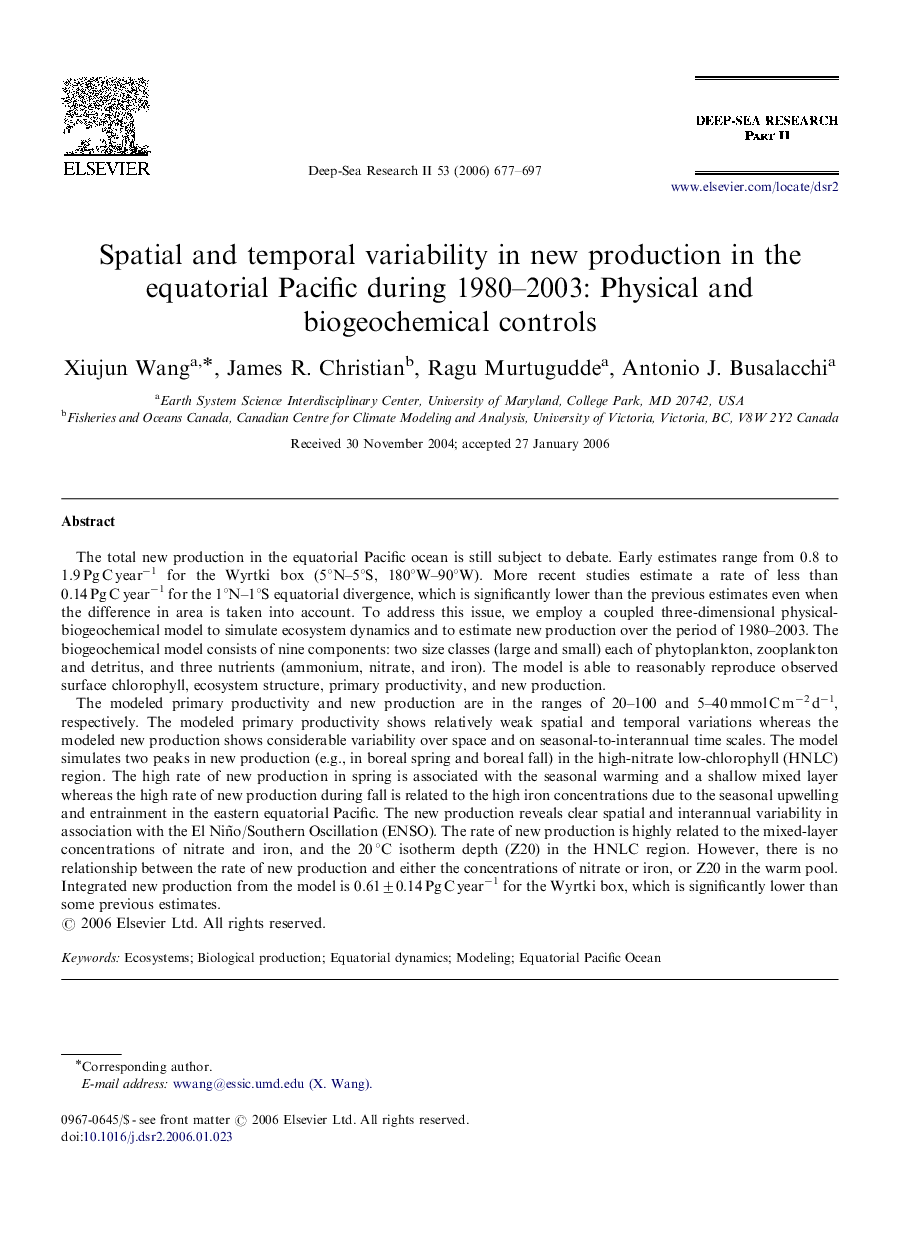| کد مقاله | کد نشریه | سال انتشار | مقاله انگلیسی | نسخه تمام متن |
|---|---|---|---|---|
| 4537806 | 1626517 | 2006 | 21 صفحه PDF | دانلود رایگان |
عنوان انگلیسی مقاله ISI
Spatial and temporal variability in new production in the equatorial Pacific during 1980-2003: Physical and biogeochemical controls
دانلود مقاله + سفارش ترجمه
دانلود مقاله ISI انگلیسی
رایگان برای ایرانیان
کلمات کلیدی
موضوعات مرتبط
مهندسی و علوم پایه
علوم زمین و سیارات
زمین شناسی
پیش نمایش صفحه اول مقاله

چکیده انگلیسی
The modeled primary productivity and new production are in the ranges of 20-100 and 5-40 mmol C mâ2 dâ1, respectively. The modeled primary productivity shows relatively weak spatial and temporal variations whereas the modeled new production shows considerable variability over space and on seasonal-to-interannual time scales. The model simulates two peaks in new production (e.g., in boreal spring and boreal fall) in the high-nitrate low-chlorophyll (HNLC) region. The high rate of new production in spring is associated with the seasonal warming and a shallow mixed layer whereas the high rate of new production during fall is related to the high iron concentrations due to the seasonal upwelling and entrainment in the eastern equatorial Pacific. The new production reveals clear spatial and interannual variability in association with the El Niño/Southern Oscillation (ENSO). The rate of new production is highly related to the mixed-layer concentrations of nitrate and iron, and the 20 °C isotherm depth (Z20) in the HNLC region. However, there is no relationship between the rate of new production and either the concentrations of nitrate or iron, or Z20 in the warm pool. Integrated new production from the model is 0.61±0.14 Pg C yearâ1 for the Wyrtki box, which is significantly lower than some previous estimates.
ناشر
Database: Elsevier - ScienceDirect (ساینس دایرکت)
Journal: Deep Sea Research Part II: Topical Studies in Oceanography - Volume 53, Issues 5â7, MarchâApril 2006, Pages 677-697
Journal: Deep Sea Research Part II: Topical Studies in Oceanography - Volume 53, Issues 5â7, MarchâApril 2006, Pages 677-697
نویسندگان
Xiujun Wang, James R. Christian, Ragu Murtugudde, Antonio J. Busalacchi,